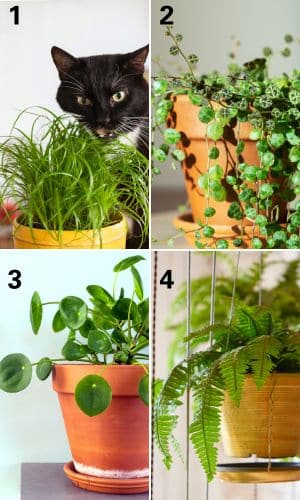In this article, we’ll explore some of the most common toxic plants and offer alternatives that are safe for your beloved cats and dogs. The post A Guide to Toxic Plants and Pet-Friendly Alternatives appeared first on After Hours...
As pet owners, we want nothing but the best for our furry companions. This includes creating a safe and healthy environment for them to thrive. One aspect of pet safety that often goes overlooked is the choice of plants in our homes and gardens. Many plants can be toxic to pets, leading to serious health issues or even death.
Toxic Plants for pet and Pet-Friendly Alternatives
In this article, we’ll explore some of the most common toxic plants for pet and pet-friendly alternatives that are safe for your beloved cats and dogs.

Plants to Avoid
Generally, most toxic plants require ingestion, but some can also be dermal irritants. The two most problematic plants for pets are Cycads for dogs and Lilies for cats.
Cycads and Dogs
Cycads, particularly the Sago Palm, are a significant threat to dogs. The toxin found in these plants when ingested can lead to devastating consequences. Symptoms include vomiting, diarrhea, abdominal pain, jaundice, seizures, and, sadly, death in most untreated cases. Immediate veterinary attention is critical for a chance of survival, but the prognosis is poor once clinical signs appear.
Lilies and Cats
Lily ingestion is the most common toxicity issue in cats, resulting in kidney failure. Various species of lilies, including Easter lilies and tiger lilies, are highly toxic.
Minor exposure, such as licking pollen, can lead to kidney failure. Symptoms include vomiting, lethargy, loss of appetite, and dehydration. Quick diagnosis and aggressive treatment are vital to saving a cat’s life after lily ingestion.
Peace lilies and true lilies have different levels of toxicity for cats, which is important to recognise. Peace lilies generally cause mild symptoms, while true lilies are highly toxic.

Other Highly Toxic Plants
Some plants, like Cycads and Lilies, can harm pets. Other toxic plants include Brunfelsia, Birds of Paradise, Azaleas, Rhododendrons, Daffodils, Tulips, Hyacinths, and Oleander. These plants can also be harmful to your furry friends.
Insoluble Calcium Oxalate Crystals
Dogs and cats drool, paw at mouth, foam, and have trouble breathing when they chew on plants with calcium oxalate crystals. Certain plants commonly found in houses and yards can cause mouth irritation and swelling. These plants include Dieffenbachia, Philodendron, Pothos, Peace Lily, and Elephant Ear. Although not usually life-threatening, these symptoms are distressing for pets.
Date Palm Nuts
Another common issue in dogs is gastrointestinal distress following the ingestion of Date palm nuts or seeds. These seeds, when swallowed, can cause vomiting, diarrhea, and sometimes even bloody diarrhea. Additionally, the large size and hardness of the seeds may lead to small intestinal obstruction, requiring surgical intervention.
Pet-Friendly Alternatives
To keep your pet safe, make sure your home has pet-friendly plants that are not harmful. While these plants may not have specific health benefits for your pets, they can provide them with environmental enrichment. Some safe options include:
Cat Grass: Cats love to nibble on cat grass, which can be a fun and safe way to provide them with some greenery. Peperomia: These indoor house plants are safe for both cats and dogs and come in various attractive varieties. Pilea: Also known as the Chinese Money Plant, Pilea is non-toxic to pets and adds a modern touch to your decor. Ferns: Ferns such as Boston Fern, Maidenhair Fern, Staghorn Fern, and Birdsnest Fern are excellent choices that are safe for your pets.For more information on pet friendly plants, here is our A-Z guide to pet friendly plants.

Message for Pet Owners
Remember the importance of knowing about the plants in your home and garden to stay informed. Research is crucial to identify any plants that may pose a danger to your pets and to understand the level of risk.
When choosing new plants, use the ASPCA’s Animal Poison Database to check if specific plants are toxic. This database has info on poisoning signs and what to do, useful for pet owners.
If you choose to have mildly toxic plants, take precautions to keep them out of your pets’ reach. Use methods like putting plants up high, using hanging baskets, or using barriers to keep toxic plants out of reach. However, highly toxic plants should be avoided altogether to ensure your pets’ safety.
In conclusion, creating a safe and pet-friendly environment is an essential part of responsible pet ownership. Know toxic plants, choose safe options, keep pets healthy and happy.
The post A Guide to Toxic Plants and Pet-Friendly Alternatives appeared first on After Hours Vet Australia.


